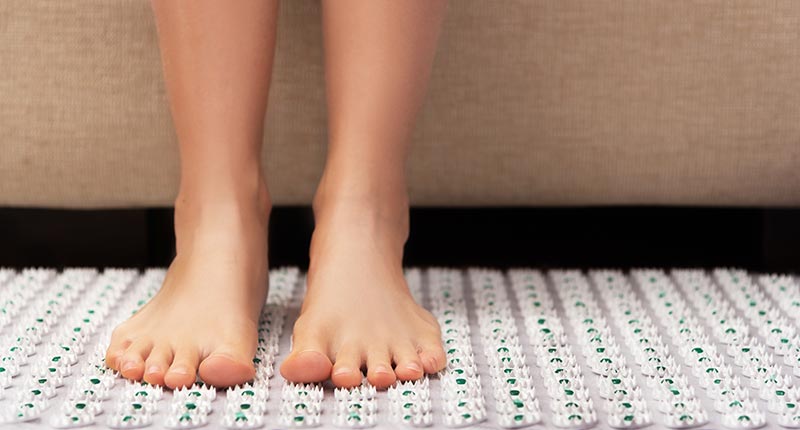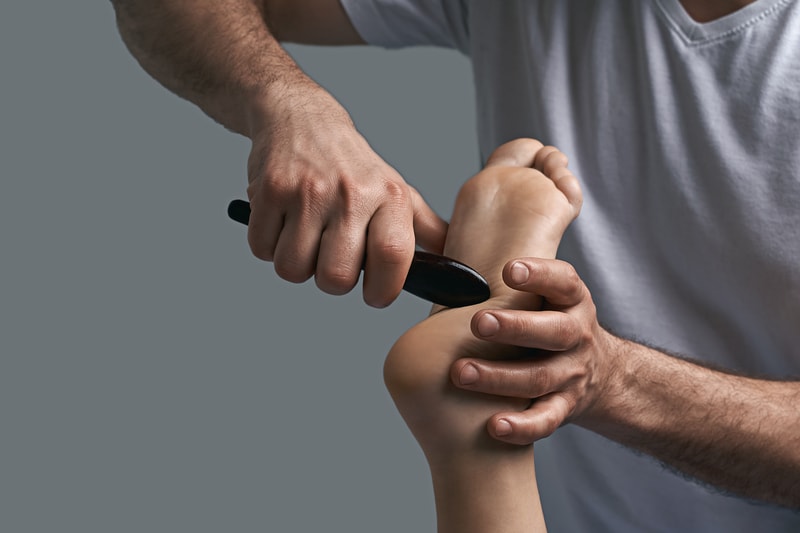How do these two external treatments for internal healing compare, and are they worth the gua sha marks?
Muscle tension, internal tissue damage, toxins, and superficial marks are nothing new. Most people suffer from at least one of these complications at some point in their life, and these problems have existed throughout human history. Luckily, a variety of options for dealing with related issues have been created over the years. The two most common natural and external methods include pressure and movement-based healing promotion. They are the gua sha and the graston. Although these two methods may seem similar at first, they are actually very unique from each other. To help you determine what method is best suited to your needs, let’s compare gua sha vs. graston.
Appearances:
Gua sha –
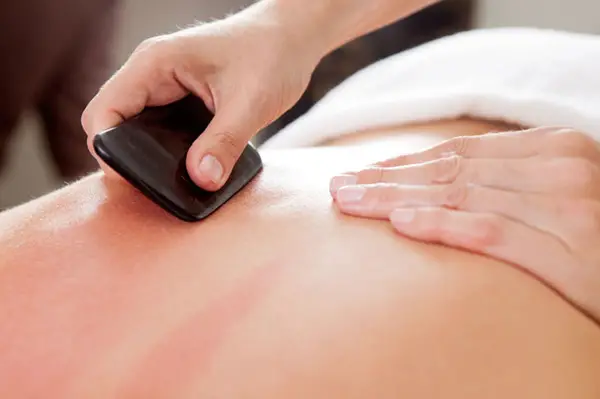
This tool is a part of historical Chinese medicine, and as such, it has taken on many shapes over the years. In some cases, knuckles, spoons, animal bone, coins, or whatever else was closest would be used. The point was to find an item capable of scraping and rubbing against the skin without breaking the skin. Today, gua sha orthopedic soft tissue tools have taken on a modern look and tend towards thin, smoothly shapen jade and stone tools. They commonly have a cupped edge and or a lightly toothed edge. The tool is thin and flat, so it may be firmly held in one’s hand while pressure is applied to the body as the tool’s edge is scraped across the skin.
Graston –
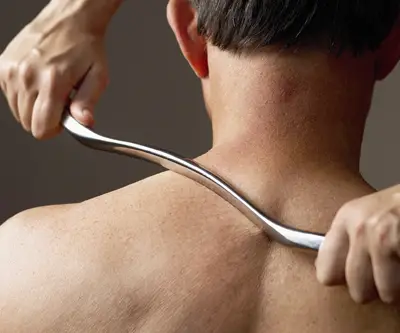
This technique and associated tools are much more recent than its gua sha counterpart. An athlete created the Graston in the 90’s who was influenced by the benefits of the gua sha. His resulting invention was made out of stainless steel and designed to have a thin, rounded edge. The tool comes in a few different forms, with some being longer for pressure application with both hands, while others are smaller and made for single-handed use. Some grastons have more curves, and others have holding groves, but they are all always made out of stainless steel. The appearance of gua sha vs. graston boils down to a unique and varied tool versus a specific medical-grade set of tools.
Uses:
Gua sha –

Gua sha can be performed in most places on the body, including the face. Its historical use focuses on specific points known as “yang areas.” These areas include the back, shoulders, limbs, neck, and butt. Today the face and feet are also common areas for gua sha treatments.
This treatment is commonly performed by trained gua sha practitioners, although it can also be performed on oneself at home. To avoid any intense damage to the outer layer of skin, thick oil is applied first. This oil helps the gua sha tool slide across the skin while pressure is applied. Short, long, or a combination of the two strokes are used to bring the body’s heat and any issues to the surface in a visible way. These are known as gua sha marks. They can appear in a variety of ways and are sometimes referred to as a gua sha rash. Either a rash will form, or the skin will only turn pink, at which point the deep rhythmic pressure of the gua sha treatment can be stopped.
Graston –
![]()
The graston treatment is also manual and includes deep pressure. However, it is not limited to any specific area of the body. It originated as a sports treatment, and it is commonly used on damaged or healing muscles. This includes areas with muscle knots or internal fibrous scar tissue that may be restricting your mobility. These tissue abnormalities are easier to identify using graston tools, and once they are identified, they can be treated with the same tools.
A trained physical therapist commonly administers graston treatments by providing firm sliding strokes over areas of damaged internal tissue to improve recovery. This method can still cause bruising and should be performed with some form of oil or light lubrication to prevent the tool from damaging the skin’s surface. When comparing gua sha vs. graston concerning their uses, the two treatments share many similarities, including a focus on muscled areas and oil use to prevent abrasion.
Benefits:
Gua sha –
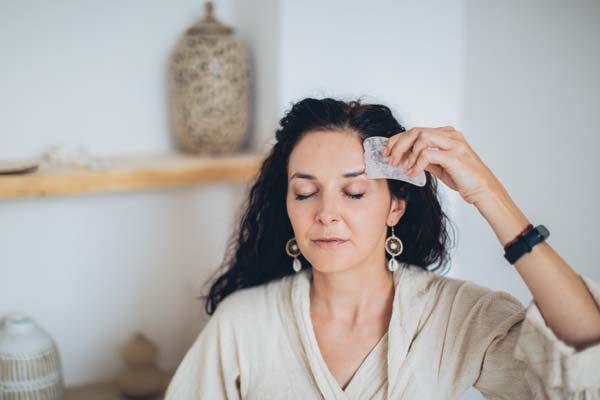
Gua sha can be used as a way to identify internal complications through the color and appearance of any gua sha rash that appears. You can refer to a gua sha color chart here. However, this practice can also be applied for gua sha healing. It can be used to treat both acute and chronic pain in various scenarios, including general pain from poor posture, pain associated with intense physical strain, and pain associated with aging. You may even use Gua Sha for plantar fasciitis. After gua sha treatment, many patients experience relief from their pain that seems to be longer lasting than other modern methods like heat packs of light pain relief medications.
Beyond the treatment of muscle-related complications, gua sha is also revered for treating colds or other illnesses. The pressure and movement used in gua sha healing are similar to the motions that aid lymph drainage and the practice is believed to bring toxins to the skin’s surface. These gua sha toxins are then released from the body. In combination with the improved lymph drainage, the immune system is supported, which explains the enhanced ability to recover from diseases.
With a specific focus on beauty and the face, gua sha orthopedic soft tissue tools have also been found to improve skin’s elasticity and complexion. It is believed that the gentle scraping motions associated with facial gua sha plump the skin, help it naturally remove toxins, and improve the natural renewal of skin at the surface. This practice can also be combined with creams or oils fitted to the needs of various skin types to enhance further the benefits of practicing gua sha.
Graston –
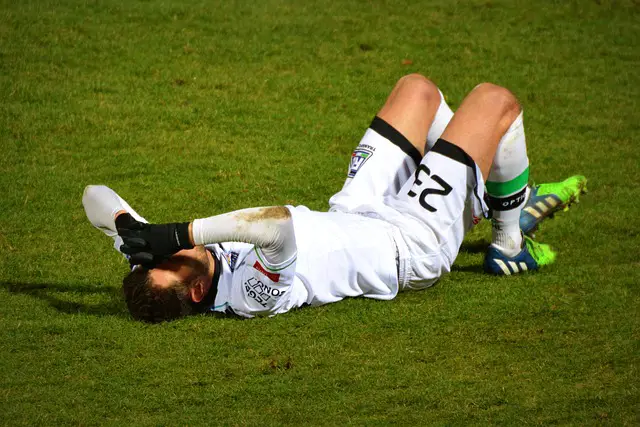
The graston technique is focused on the reduction of pain and edema, as well as the improvement of physical motion. Despite being created with sports medicine in mind, graston tools can be used across the body, including delicate and boney areas, when practiced appropriately. Both in graston treatments and gua sha, arthritis can be addressed through the treatment of neighboring muscle groups. This treatment’s effectiveness is a result of breaking up areas of damaged tissue to reduce future inflammation and facilitate a proper re-healing process.
In many ways, the graston method carries similar benefits in relation to gua sha and is best practiced in combination with other physical therapy forms. When gua sha vs. graston is based on uses, it becomes apparent that gua sha is believed to treat far more ailments.
Cupping:
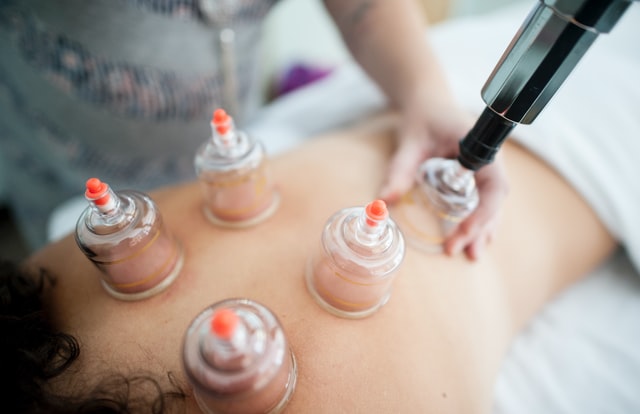
Gua sha –
Cupping is a practice during which forms of suction, or “cups,” are used to draw blood to the skin’s surface. This method of pain alleviation and healing also has its roots in historical Chinese medicine. The benefits of gua sha and cupping are very similar. However, cupping is more challenging to perform on areas of the body that are not flat enough, are too bony, or too delicate. Cupping and gua sha make a good combination because gua sha treatments can be used in any places where cupping may be impractical.
Graston –
This treatment can also be performed with cupping; however, this combination is less common. This is likely because graston treatments are performed by licensed physical therapists and other medical professionals who commonly prefer other methods for the promotion of muscular healing. Considering gua sha vs. graston, gua sha practitioners are also likely to provide cupping treatments.
After Care:

Gua sha –
Gua sha treatments may not break the skin, but they should still be managed with care. The gua sha rash directly results from capillaries being broken at the skin’s surface and tissue bruising beneath the skin. Aside from slight pain and sensitivity resulting from these marks, gua sha aftercare should not involve any complications. After gua sha treatment advice commonly includes a light painkiller to help with any discomfort as well as the protection of any bruised areas. Those areas need to heal, and they can not do so if they are not rested and protected. The application of occasional ice can also help speed up the gua sha healing.
Graston –
Graston treatments include a similar rest and protection method to aftercare. The bruising from graston treatments are not typically as intense as it is with gua sha, but patients are still liable to be sore afterward. From a physical therapy stand-point, graston aftercare may be coupled with more physical motion than gua sha aftercare. However, it is utterly dependent on the patient and the problem that is being addressed.
Conclusion:
If you are still wondering, “is graston and gua sha the same thing?” then the simple answer is no. These two forms of deep tissue treatment are potent tools for controlling pain, improving the skin’s appearance, and facilitating a fast recovery. However, gua sha treatments provide benefits beyond the healing of specific physical points and extend to all body areas. With proper training, anyone can practice gua sha on themselves. When comparing gua sha vs. graston, it is essential to remember that true graston tools are commonly reserved for licensed medical professionals.
If you are looking to start either of these practices, be sure to consult an experienced professional and startwith minimal treatment to see how your body reacts. If all goes well, you should be pain-free in a natural and health-promoting way!
Photo Credits:
https://commons.wikimedia.org/wiki/File:GrastonTechnique_shoulder-treat.jpg
https://commons.wikimedia.org/wiki/File:GT-Instruments_400pixelswide.jpg
https://pixabay.com/photos/football-injury-sports-pain-619243/
https://unsplash.com/photos/Pdea8oxLHkU
https://unsplash.com/photos/p-I9wV811qk
 P. Sze
P. Sze 




